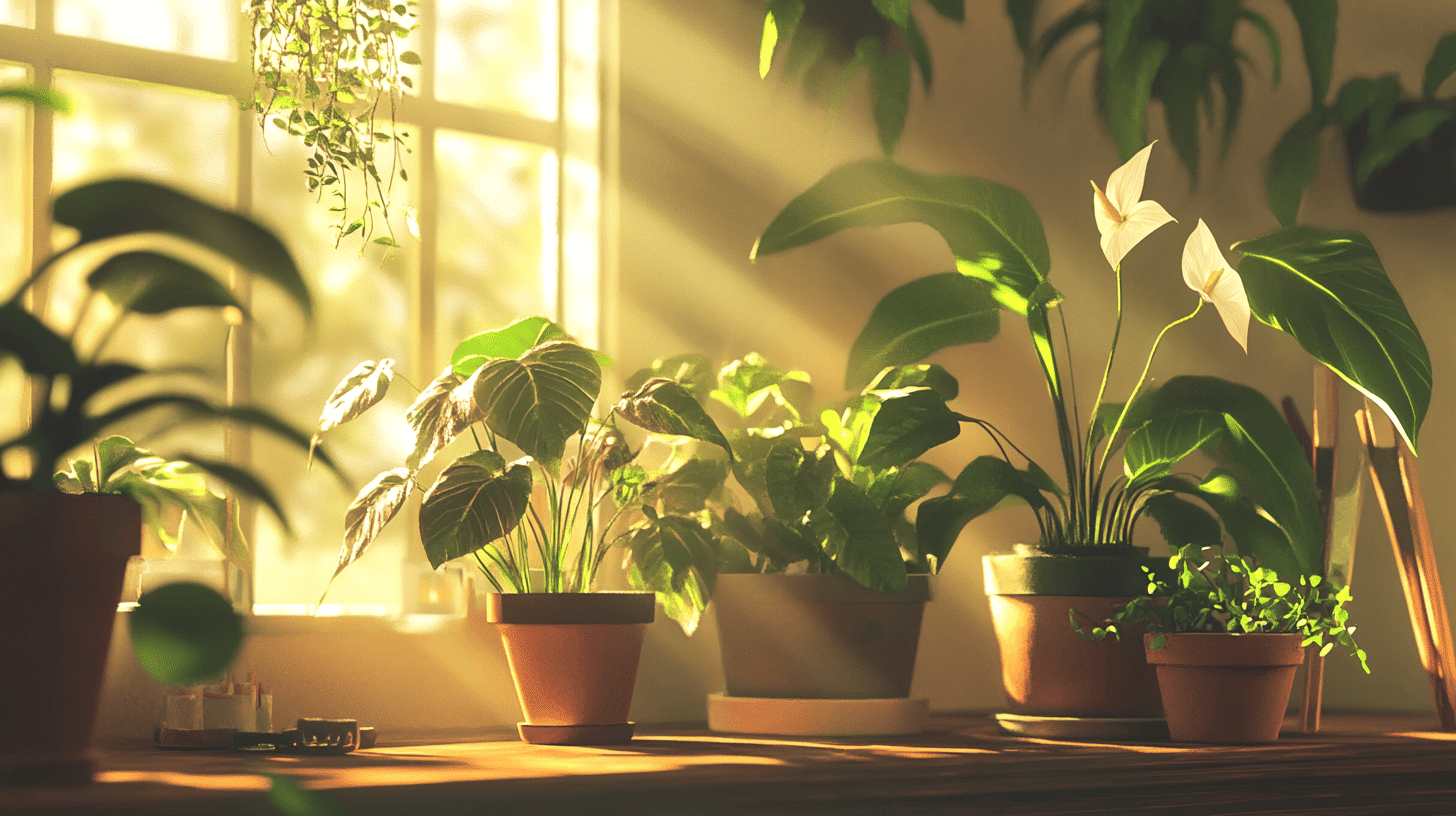Caring for the environment is a responsibility we all must take on, and one of the most effective and rewarding ways to contribute to this cause is by growing plants. They not only beautify our homes, but they also play a key role in purifying the air and reducing pollution. In this post, we’ll delve deeper into how to grow and care for plants that bring environmental benefits, as well as practical tips for making them part of your daily life.
The Importance of Plants for the Environment
Plants are essential to life on Earth. They act as natural filters, absorbing carbon dioxide (CO2) and releasing oxygen, which is vital for the breathability of the air we consume. In addition, some plants are capable of removing specific pollutants, improving air quality indoors and in urban environments.
Understanding the importance of plants is the first step to becoming more aware of what to grow and how to care for them. Here are some specific reasons why you should consider having more plants in your home:
– Improved air quality: Plants such as the Snake Plant and Areca Palm are known for their ability to filter toxins and pollutants. – Stress reduction: Studies show that caring for plants can reduce feelings of stress and increase feelings of well-being. – Biodiversity: Growing a variety of plants contributes to biodiversity, which is essential for maintaining the balance of ecosystems.
Choosing the Right Plants
When choosing plants to grow, consider two important factors: 1. Adaptability to your environment: Check the level of light available in the place where the plant will be placed. Some plants adapt better to environments with direct light, while others prefer shade. 2. Environmental benefits: In addition to aesthetic qualities, choose plants known for their air-purifying abilities.
With that in mind, here are some great options for you to consider: – Philodendron (Philodendron): Excellent for indoors as it purifies the air and grows well in low light environments. – Peace Lily (Spathiphyllum): In addition to being beautiful, this lily is effective in removing pollutants such as formaldehyde. – Jade (Crassula ovata): A succulent plant that requires little care and provides an aesthetic touch to the environment. – Rosemary (Rosmarinus officinalis): In addition to being a culinary herb, it also has antibacterial properties.
Growing and Care Tips
Now that you’ve chosen your plants, here are some tips to ensure they thrive: – Watering: Each plant has specific water needs. It is important to investigate the ideal humidity level for your species. A common mistake is overwatering, which can cause root rot. – Light: As mentioned earlier, provide the right amount of light. Many houseplants do best in indirect light, while others thrive in direct light. Move your plants around to find where they feel most comfortable. – Fertilizing: Use a fertilizer appropriate for the type of plant you have. Organic fertilizer is an excellent option for providing nutrients in a sustainable way. – Pests and Diseases: Watch for signs of pests. Soap and water mixtures or neem oil are effective, natural solutions for controlling unwanted insects. – Transplant: As your plants grow, you may need to transplant them into larger pots to ensure they have enough room to grow.
Impact of Plants on the Environment
Growing plants at home not only improves individual well-being, but also contributes significantly to preserving the environment. By neglecting plant cultivation, we lose a powerful ally in the fight against climate change and environmental degradation.
When people choose to grow their own plants, whether in pots or in gardens, they are directly supporting urban biodiversity. Community gardens and vegetable gardens are initiatives that promote the presence of pollinators, such as bees and butterflies, in addition to providing fresh and healthy food.
Creating a Green Space at Home
Start by creating a small green space even in apartments or houses with little outdoor space. Here are some ideas: – vertical gardens: This is an innovative solution to maximize the use of space. You can use wooden supports or even shelves to place your plants arranged vertically. – Vegetable gardens in pots: Growing herbs in pots in the kitchen or on the balcony is a great way to have fresh produce within reach and also contribute to the environment.
Conclusion
Growing plants is a practice that is not only beneficial to the environment, but also rewarding for those who dedicate themselves to caring for them. In this approach, every small action counts and has a positive impact on the environment. By adopting a greener lifestyle, we help create a more sustainable future.
So, now it’s your turn! How about starting to grow your own plants? Choose some of the options we’ve discussed, follow the growing tips, and watch them flourish and transform your space. Feel free to share your experiences and the plants you’re growing in the comments below.



